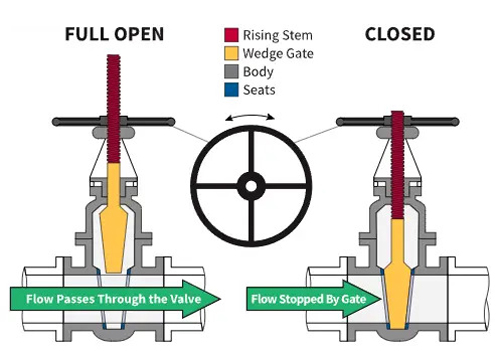Ball Valve vs Gate Valve: Understanding the Key Differences for Optimal Selection
Choosing the right valve is critical for efficient fluid control in piping systems. Among the most prevalent options, ball valves and gate valves serve distinct purposes despite their shared function of regulating liquid and gas flow. This comprehensive comparison examines their designs, advantages, limitations, and ideal applications to empower engineers, plumbers, and system designers with informed decision-making.
Ball Valves: Quarter-Turn Shutoff Solutions
A ball valve operates via a hollow, pivoting sphere with a central bore. Rotating the handle 90 degrees aligns the bore with the flow path (open) or blocks it completely (closed). Renowned for durability and reliable sealing, they excel where rapid isolation is paramount.

Ball Valve Characteristics:
Design:Simple construction with minimal moving parts enhances reliability and ease of upkeep.
Operation: Manual lever or automated actuator enables swift quarter-turn action and remote control.
Flow Performance: Delivers excellent flow capacity with minimal pressure drop, suitable for high-pressure systems.
Sealing:Provides bubble-tight shutoff, significantly reducing leakage risks
Advantages of Ball Valves:
Rapid Operation: Instant open/close function (90° turn) ideal for emergency shutoff.
Low Flow Resistance: Full port designs offer near-zero pressure drop when open.
Material Versatility: Compatible with water, oil, gas, steam, and corrosive media.
Robust Construction: Withstands high pressures and temperatures in demanding environments.
Disadvantages of Ball Valves:
Poor Throttling Suitability: Partial opening causes seat erosion and turbulent flow damage.
Higher Initial Cost: Often more expensive than comparable gate valves, depending on materials.
Gate Valves: Full-Flow Isolation Valves
Gate valves utilize a sliding gate or wedge perpendicular to the flow. Raising the gate fully clears the flow path (minimal resistance), while lowering it creates a seal. Primarily used for unrestricted flow where infrequent operation occurs.

Gate Valve Characteristics:
Design: Features rising or non-rising stems with complex gate mechanisms.
Operation: Requires multiple handle turns (slow operation) for full open/close positions.
Flow Performance: Optimized for full-bore flow with negligible pressure drop when fully open.
Sealing: Potential for seat and stem leakage over time, especially under high pressure.
Advantages of Gate Valves:
Minimal Pressure Loss: Straight flow path maximizes flow efficiency when fully open.
Cost-Effectiveness: Generally lower purchase price than ball valves.
Large Diameter Suitability: Preferred for big pipelines requiring unobstructed flow.
Disadvantages of Gate Valves:
Slow Operation: Multi-turn mechanism hinders quick response needs.
Seal Degradation: Prone to leakage from seat/wear damage or stem packing failure.
Throttling Incompatibility: Partially open positions cause vibration, gate/scouring, and seal damage.
Critical Differences: Ball Valves vs Gate Valves
1. Operating Principle:
Ball Valve: Quarter-turn rotational motion (90°).
Gate Valve: Multi-turn linear motion (vertical gate movement).
2. Flow Control Capability:
Ball Valve: Tight shutoff superior; throttling not recommended.
Gate Valve: Full open/close only; throttling causes severe damage.
3. Sealing Integrity:
Ball Valve: Superior sealing, especially under high pressure.
Gate Valve: More susceptible to leaks due to sliding contact surfaces.
4. Cost & Maintenance Factors:
Ball Valve: Higher initial cost, lower lifetime maintenance needs.
Gate Valve: Lower initial cost, potentially higher maintenance from wear/seals.
5. Primary Applications:
Ball Valve: Gas lines, oil systems, frequent cycling, emergency shutoff (HVAC, process control).
Gate Valve: Water mains, irrigation, wastewater, infrequent operation requiring full flow.
Conclusion: Selecting the Optimal Valve
Ball valves and gate valves serve vital yet distinct roles. Choose ball valves for critical shutoff, frequent operation, and superior leak prevention. Opt for gate valves when cost-sensitive, full-bore flow in large pipes is needed, and operation is infrequent. Understanding these core differences—operation speed, sealing performance, flow characteristics, and cost structure—ensures optimal valve selection, enhancing the efficiency, safety, and longevity of your piping infrastructure for both new designs and maintenance upgrades.
Post time: Feb-10-2025






